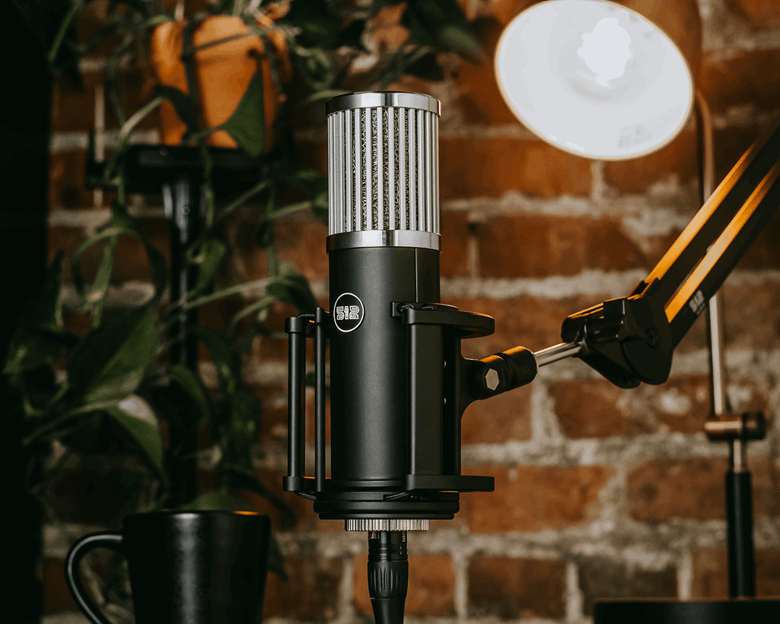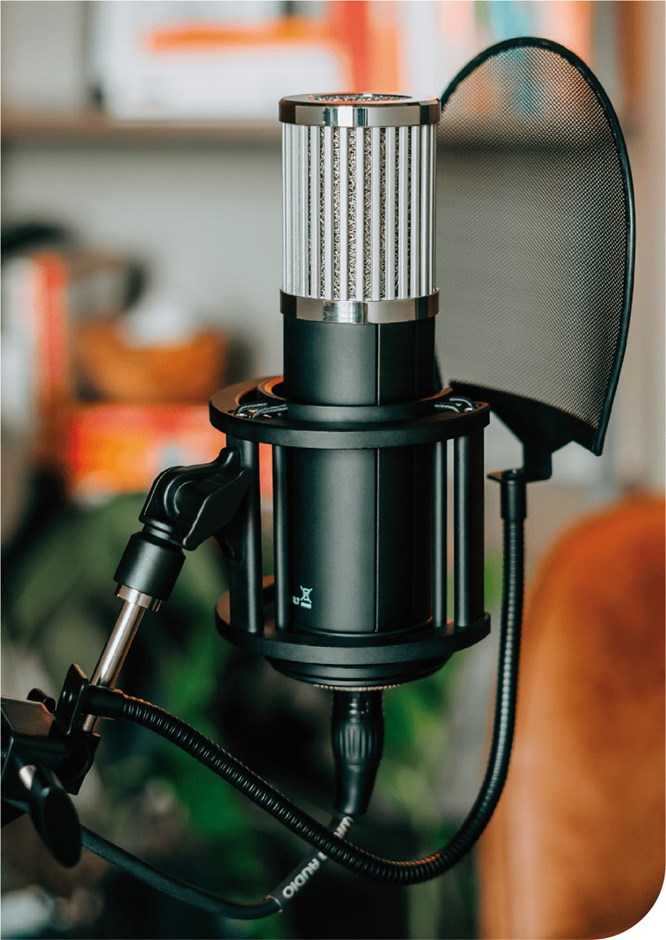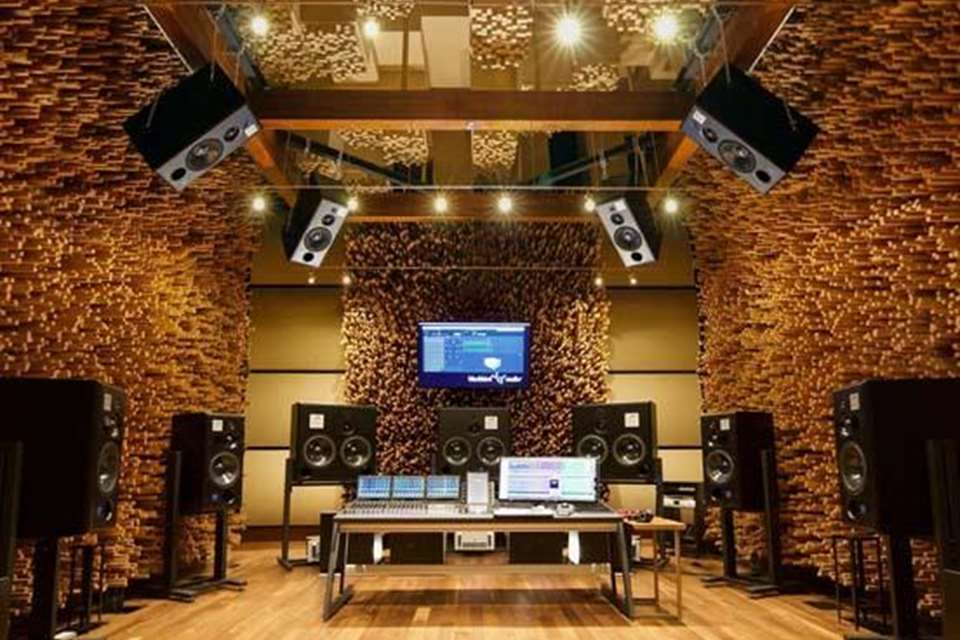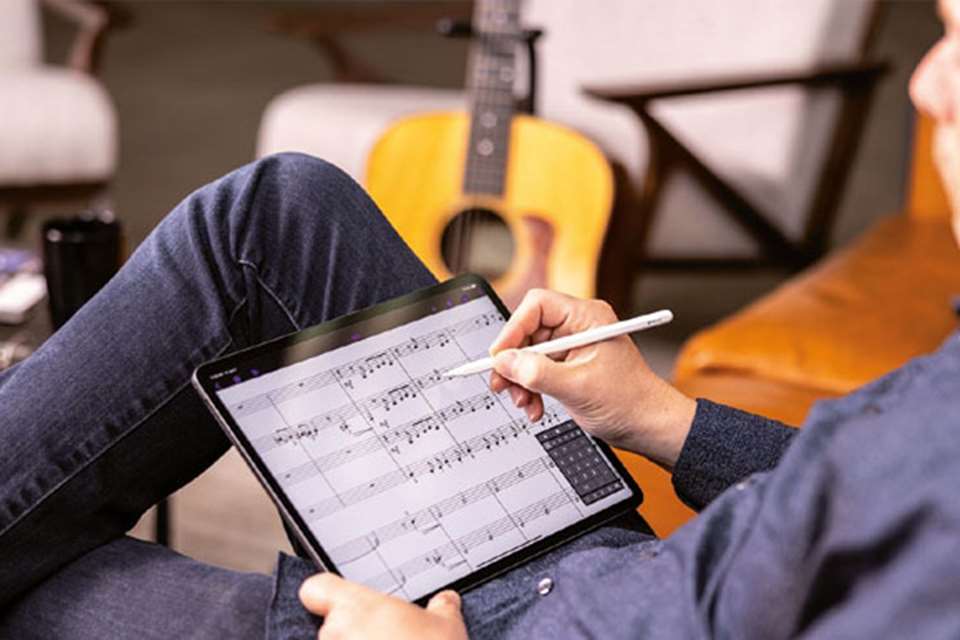Tech Review: Skylight Condenser Mic
Tim Hallas
Monday, November 1, 2021
Tim Hallas reviews the Skylight Condenser Mic from 512 Audio.

The Skylight is one of two mics available from a new brand: 512 Audio. 512 Audio is the latest brand to be launched by hardware manufacturers Warm Audio. Warm Audio is a very well-regarded company in the music industry, specialising in the manufacture of modern recreations of vintage gear. It creates vintage rack mount compressors and preamps but also makes recreations of vintage mics that cost hundreds of pounds, rather than thousands that the originals fetch.
However, recreations of rare vintage gear aren't for everybody. Some people just want some equipment that will do the job and will sound good. So Warm Audio has launched its new brand 512 Audio to fulfil that specific requirement. There are two mics in the initial 512 range: the Skylight and the Limelight. The Limelight is a dynamic mic similar to the Shure SM7B and the Sontronics Podcast Pro (reviewed in MT July 2020). But the mic under review here is the large diaphragm condenser: the Skylight. The Skylight is a mid-priced mic that 512 Audio says is tuned for vocals and is aimed at content creators (podcasters, YouTube creators, for example) that require a decent vocal mic.
The Skylight sits in the sub-£200 market, making it an affordable option for schools and other teachers looking for a microphone for recording and online teaching. However, at that price it is also up against some pretty fierce competition in the Rode NT-1a and the SE Electronics SE2200a. Both of these mics have been around for years, are well regarded and can be found in countless schools and colleges across the world – including my own.
It therefore made sense to compare the Skylight with these mics in the confines of the college studio. I used identical setups for all three microphones with the mics in an isolation booth, connected to an Audient iD22 interface and using a pop shield to control loud sibilants. The only difference was the use of the included mesh pop shield with the Skylight and a generic pop shield for the other mics
Build quality
The Skylight feels well-constructed and is housed in a dark grey powder-coated finish. The grill gives it a pleasingly modern look and it comes with a matching bag, stand mount and pop shield. The mic mounts easily into the cradle and is screwed in to ensure that it won't accidentally fall out. The pop shield is a metal-mesh and slots into the front of the stand mount. The pop shield is the only element of the Skylight that I wasn't impressed with – it still let through some of the stronger plosive sounds, so if you are recording anything particularly sibilant, I'd recommend an alternative pop shield.
Vocals
Now it was time to make some noise, and the first thing I noticed was the slight boost in the low-mid frequencies around 500Hz. This is where the ‘body’ of most voices sits, and a slight boost here can make a voice sound fuller and richer. This is quite a useful feature for a mic that is aimed at the ‘content creator’ market because in music the voice is supported by all of the instruments, but with speech it tends to be isolated and can sound quite thin.

This boost still sounds good on sung vocals and the richness of the mic should add some depth to thinner sounding vocals. By comparison, the Rode NT-1a has an overall brighter sound on the vocals and, in a mix context, allows the vocals to cut through a little bit more. The SE2200a, by contrast, felt muddier in all areas of its sound. It's the cheapest of the three mics, but it lacked clarity and the vocals didn't sit well in a mix or have the depth and brightness of the other two mics.
The Skylight stands up excellently as a vocal mic when compared to two of its biggest competitors. The slight boost to the low mids gives a warmth that is lacking from the others but the brightness in the Rode is pleasing in a different way.
Guitar
Although the Skylight advertises itself as a vocal mic, it's likely that any school, musician or independent content creator is going to want to use it on other sound sources (at least occasionally), so I thought it important to use the mic on something else. I set the Skylight, the SE2200a, and the Rode up in front of an acoustic guitar to see how they handle acoustic instruments.
The slight boost in the lower frequencies of the Skylight really worked well on the acoustic guitar. It gave the guitar a natural warmth that was closer to the sound of the original instrument than the Rode. The brightness of the Rode made the acoustic sound thin and not as rich and sonorous as the acoustic instrument. The SE2200a required a significant amount more gain than the other two mics and its overall darkness prevented the guitar from sitting nicely in a mix. The Skylight, despite its focus as a vocal mic, is a great all-rounder. I would feel confident using this on a wide range of instruments and, because it's a condenser, can be used for ambient recordings and the capture of larger groups.
Summary
The Skylight is an excellent mic for the price. It sounds lovely and it has the looks to match. The particular choice of how this mic has been tuned to suit sung and spoken voice is excellent. The target market of ‘content creators’ will find this mic of interest when compared to mics of a similar price and, in the age of hybrid teaching, and with the potential of more online teaching to come, a good quality vocal mic is a worthwhile investment for us as teachers. Having a decent microphone available for online music teaching is important and allows decent audio to be shared with remote students.
Further, having a decent microphone in a department is always useful – recordings using phone and built-in laptop mics are fine for a quick capture, but for submission to an exam board (assuming we do that this year) a better-quality mic is really a sensible investment.
512 Audio has done well with its first condenser. Although it has a specific market in mind, it is a great mic a for a wide range of purposes. It is well built, well designed and sounds good.
It stands up very well against its competitors and my only purchase recommendation is to choose your mic based on the character that you want it to have. I have no problem recommending this mic as an excellent option for any school, college or independent music educator.
PRICE: £189.99





